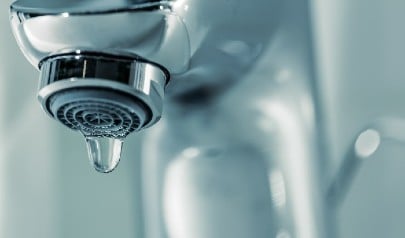Reasons Contributing to Water Deterioration in the Bathroom
Reasons Contributing to Water Deterioration in the Bathroom
Blog Article
How do you really feel about How to Repair and Prevent Bathroom Water Damage??

Water damage typically takes place in the restroom because of the water utilized day-to-day. Occasionally, the damage could be a little mold and mildew from the shower. Various other times, it's massive damages on your flooring. Whatever it is, it is constantly great to understand the cause as well as prevent it prior to it takes place.
This overview will experience a few of the usual causes of water damage in the bathroom. We will also examine what you can do to prevent these reasons from harming your washroom. Let's dive in.
These are the typical reasons you would certainly have water damage in your bathrooms and how you can identify them:
Excess Moisture
It's cool to have that long shower and sprinkle water while you dance around and also act like you're performing, but in some cases these acts might trigger water damage to your washroom.
Sprinkling water around can trigger water to go to corners and form mold and mildews. Enjoy exactly how you spread excess moisture around, and when you do it, clean it up to stop damages.
Fractures in your wall floor tiles
Washroom wall surface tiles have actually been particularly created for that purpose. They secure the wall from dampness from people taking showers. However, they are not undestroyable.
In some cases, your washroom wall floor tiles split and allow some wetness to permeate right into the wall surface. This might potentially destroy the wall surface if you don't take any action. If you observe a fracture on your wall surface tiles, fix it immediately. Do not wait till it ruins your wall surface.
Overruning bathrooms as well as sinks
As humans, in some cases we make errors that can create some water damage in the washroom. For instance, leaving your sink tap on can trigger overflowing and damages to various other parts of the washroom with dampness.
Additionally, a damaged commode might cause overflowing. For example, a busted commode take care of or various other parts of the tank. When this occurs, it might harm the floor.
As quickly as you see an overruning sink or commode, call a plumbing to aid manage it promptly.
Burst or Dripping Pipes
There are several pipelines lugging water to various parts of your washroom. Some pipes take water to the commode, the sink, the faucets, the shower, and also numerous various other places. They crisscross the small location of the washroom.
Occasionally, these pipes could obtain rustic and burst. Other times, human activity could trigger them to leak. When this takes place, you'll locate water in the corners of your shower room or on the wall surface.
To find this, watch out for bubbling walls, molds, or mold. Call a professional emergency plumbing to fix this when it occurs.
Roofing system Leaks
In some cases, the issue of water damage to the restroom might not come from the washroom. As an example, a roof covering leakage might cause damages to the shower room ceiling. You can find the damages done by considering the water spots on the ceiling.
If you locate water spots on your ceiling, examine the roofing to see if it's harmed. Then, call a professional to aid address the concern.
Verdict
Water damage to your shower room can be irritating. Nonetheless, you can handle it if you avoid a few of the causes stated in this overview. Call a professional emergency situation plumbing if you notice any severe damages.
How to Prevent Water Damage in Your Bathroom?
Water damage repair is an expensive, meticulous, and lengthy process. Unfortunately, bathrooms are the most susceptible rooms to water damage due to toilets, showers, and sinks. Pipes and fixtures wear out over time and are not immune to damage. But all is not lost, as there are ways to prevent water damage from occurring in your bathroom.
Check Your Plumbing
Nothing lasts forever, especially pipes, which can rust and begin leaking over time. You should periodically conduct pipe inspections and pay attention for any musty smells or water stains that may indicate you need water damage repair. Here are some things to check:
Frequently test valves for your toilet, shower, and sink to ensure they are properly working. Check faucet supply lines hidden under vanities and replace when needed. Replace cracked or deteriorating caulking along sinks, tubs, and showers. If you notice a clog in your sink, call in a professional. Since you can’t check the pipes in the wall, keep an eye out for stains, drywall bubbling, musty smells, and excess moisture; if the bathroom is on a second level, check the ceiling of the room directly below for these signs. Don’t Overwork Your Toilet
One of the most common reasons bathrooms need water damage repair is due to overflowing toilets. Save yourself the hassle of cleanup by being mindful and not pushing your toilet to extreme limits. If you have young children, it is especially important to keep an eye on them when they are in the bathroom and to teach them how to avoid clogging the toilet. Here are some more tips to help prevent your toilet from overflowing:
If you have a septic tank, only use septic-safe toilet paper Do not flush anything down the toilet besides toilet paper; items like diapers and sanitary napkins will clog the piping Pay attention to your toilet’s water level: If it’s low, it could mean it is partially clogged or that there is a crack in the toilet bowl https://www.alure.com/home-improvements-blog/resources/how-to-prevent-water-damage-in-your-bathroom

As an avid reader on How to Repair and Prevent Bathroom Water Damage?, I imagined sharing that topic was a smart idea. Sharing is nice. Helping others is fun. We appreciate reading our article about How to Repair and Prevent Bathroom Water Damage?.
Solve now, call! Report this page